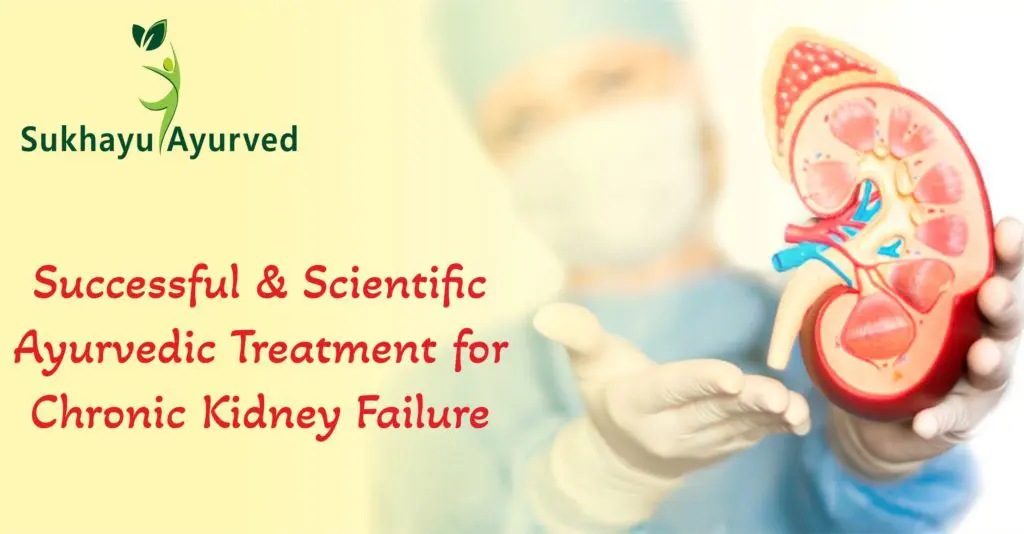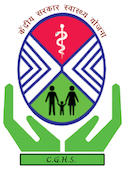Ayurvedic Treatment for Kidney Failure
Ayurvedic Treatment
for Kidney Failure
Let’s unite with us in a revolution for #STOPDIALYSIS_with_AYURVEDA
Consult with Vaidya Dr. Pardeep Sharma for the consultation
for your treatment for kidney failure.
We believe in bringing life to kidney patients.
The post here will discuss Ayurvedic treatment for kidney failure.
Therefore the treatment of kidney failure is all about balancing all these activities one by one.
Ayurvedic treatment for kidney failure is not only effective but also safe. There are no side effects of this treatment.
If you are looking for ayurvedic treatment for kidney failure, then there is no need to look any further. Kidney Disease Solution is the best ayurvedic treatment for kidney failure available at Sukhayu Ayurved. This treatment is not only effective but also safe. There are no side effects of this treatment.
This ayurvedic treatment for kidney failure is based on the principles of Ayurveda. It uses herbs and other natural substances to treat kidney failure. The aim of this treatment is to improve the functioning of the kidneys and prevent further damage to the kidneys.
This ayurvedic treatment for kidney failure is very effective in treating kidney failure. It helps in improving the functioning of the kidneys and also prevents further damage to the kidneys. This treatment is very safe and there are no side effects of this treatment.
Before we will jump to a complete understanding of the Ayurvedic treatment for kidney failure, you need to know the basic details about the disease.
What is Kidney Failure
Kidney failure means that the kidneys are no longer able to filter waste products from the blood. This can be due to a variety of different causes, including:
– Acute kidney failure, occurs when the kidneys suddenly become unable to function properly.
– Chronic kidney failure, occurs when the kidneys slowly lose their ability to function over time.
Some of the symptoms of kidney failure include fatigue, difficulty urinating and swelling in the feet and ankles. Treatment for kidney failure may include dialysis or a kidney transplant. There are two types of kidney failure: acute and chronic.
Kidney failure is a serious condition that can lead to death if not treated properly. Dialysis and/or a kidney transplant are the only
What are the earliest signs of Kidney Failure?
The earliest signs of kidney failure are often subtle and can be easily mistaken for other conditions. These may include:
– a change in urine output or frequency
– increased thirst
– fatigue
– sleep problems
– trouble concentrating
If you experience any of these symptoms, it’s important to see your doctor so that the cause can be determined and proper treatment can be started. Kidney failure is a serious condition, and early diagnosis and treatment are essential.
Common symptoms of kidney failure
The symptoms of kidney failure can vary depending on the severity of the condition. In the early stages, there may be no symptoms at all. As kidney function declines, symptoms may include:
– fluid retention, leading to swelling in the ankles, legs, and feet
– shortness of breath
– fatigue
– confusion
– difficulty urinating or blood in the urine
– nausea and vomiting
– appetite loss
– muscle cramps and twitches
Kidney failure can also cause anemia, high blood pressure, and a build-up of toxins in the body. If left untreated, kidney failure can be fatal. These common symptoms help in finding the doshas involved in the disease and thus help in Ayurvedic treatment of kidney failure with success.
Stage Wise Symptoms of Chronic Renal Failure
The CRF’s symptoms differ depending on the different phases. These phases are classified according to how the kidneys function. Blood tests like urea and creatinine determine the kidney’s working level.
The GFR is the rate at which your kidneys filter waste. This is the glomerular filtration rate in milliliters per minute (ml/min).
The kidneys’ glomeruli are tiny cup-like structures that carry out the basic function of the kidney. These little cup-like structures perform the fundamental work of the kidneys. The capacity and ability of the kidneys are measured in terms of these units.
The following are the details of CKD’s phases:
| Stage | The condition of the Kidney | What Percent of Kidney is Working | eGFR Values |
| 1st | Mild Kidney Damage. The kidney function is close to normal. | >90% | 90 or Higher |
| 2nd | Mild Kidney Damage The kidney is still working well, struggling to be normal. | 60-89% | 60 t0 89 |
| 3rd-a | Mild to moderate kidney damage. Kidneys are underperforming. | 45-59% | 45 to 59 |
| 3rd-b | Moderate to severe damage to the kidneys. Kidney function is lesser than required. | 30-44% | 30 to 44 |
| 4th | Severe kidney damage. Kidney function is almost stopped. | 15-29% | 15 to 29 |
| 5th | Most severe kidney damage. Kidneys stop working at all and this is the real condition where we can use- KIDNEY FAILURE. | <15% | Lesser than 15 |
Certainly, symptoms of the disease change according to these different stages. Here are the details of the symptoms according to the stage-
Stage 1 CKD: Symptoms
As the name suggests, this is the first stage of kidney disease.
In most cases, this is a stage with no symptoms.
When a person goes for a routine blood test, they learn about the disease just then.
The kidneys are working overtime to keep up. As a result, this is the stage where recovery is most straightforward. You can get rid of the problem permanently through proper ayurvedic treatment of kidney failure.
Symptoms of Stage 2 of CKD
This stage may also be indicative of something else. Only after careful examination can a competent doctor make a judgment. Because the symptoms in this stage are not particularly kidney-related. These are the ones I like:
- Appetite Suppression
- The drowsiness does not go away, and it gets increasingly complex as time passes.
- Itching on dry, flaky skin
- Weaknesses
- Sleeping difficulties
Patients generally ignore these symptoms since they appear to be due simply to a lack of certain vitamins. Because of this, the patient progresses from stage 2 to 3. In this stage Ayurvedic treatment of Kidney failure helps in the disease with great success.
Symptoms of Stage 3 of CKD
This is when the kidney problems first appear. The GFR classifies this condition into two categories: 3a and 3b. However, the symptoms of these two sub-stages are quite similar. Here are the symptoms-
- Back pain
- Fatigue is a natural occurrence that occurs repeatedly.
- Appetite changes more dramatically and is more apparent.
- Patient mobility towards sleeplessness increases as a result of restless sleep disturbances.
- Itching is extremely unusual.
- Symptoms of a kidney problem begin to show.
- Swelling in the feet and hands is caused by excessive water retention.
- Urine output varies in quantity.
- Urine output can vary from a few milliliters to hundreds of milliliters.
- The patient’s energy begins to fade.
- The pulse rate increases.
- Anemia can induce breathlessness in a patient.
From this stage onwards, every treatment for kidney failure, whether Ayurvedic or some other stream becomes harder, and the patient moves towards the incurability.
Symptoms of stage 4 CKD
In stage 4 of CKD, the following symptoms appear:
- Muscles become achy and twitchy.
- Difficulty in breathing
- Vomiting and nausea are two of the most common symptoms.
- The mental fogginess increases, and patients are unable to make sound judgments.
- In this stage, your blood pressure rises. As a result, cardiac problems may appear in this period.
Symptoms of Stage 5 CKD
Because you’re at the end of the line, all of the signs and symptoms become more apparent and complicated.
- The degree of vulnerability increases.
- The patient has no appetite and cannot eat anything.
- The patient is unable to sleep at all.
Why Does Kidney Fail: Causes of Kidney Failure
When we say treating from the root, we need to know and understand the causes properly. Once we know the cause we can help with proper Ayurvedic treatment of kidney failure. Because, we need to understand, what exactly we are treating.
There can be innumerable causes behind kidney failure. But when we pen down the proper reasons behind kidney failure, these can be summed up in four major activities within the renal tissues.
There are four primary changes to the kidneys in the case of chronic kidney disease. These four factors together are responsible for the harm to the kidneys.
Heavy Blood Flow
The kidneys are responsible for cleaning the blood. The most critical aspect is getting adequate blood flow. Almost 400 milliliters of blood pass through 100 grams of kidney tissue in a minute, making it the most vascular organ in the body. This has more blood than any other organ in the body.
The kidneys are subjected to everything beneficial and harmful in the blood because of this much blood flow. When these are poisonous “compounds” or “elements,” the kidneys suffer damage. Various medicines, mostly, are present among these chemicals.
For the Ayurvedic treatment of kidney failure due to this cause, we need to focus on controlling the blood flow, because that is the only way to save the kidney.
Change in Microvasculature
The nephrons, the tail section of the glomeruli, have a large network of microvessels. When abnormalities in these microvasculature cause problems with the functioning of the nephrons, it is known as CKD.
So we have a comprehensive grasp of the underlying causes of the problem. And when it comes to therapy, all we have to do is reverse the condition.
The conditions like SLE and Diabetes cause this problem. Both of these problems are causes behind kidney failure therefore when it comes to Ayurvedic treatment of kidney failure we focus on the treatment of the underlying cause.
The pressure of Blood in the Kidney
The filtering process does not work unless there is pressure. To create this pressure in the kidneys, larger arteries must be split into smaller and smaller ones. The smallest of small arteries will emerge within the cup-shaped Glomeruli, naturally. These cups operate as units of the kidney.
Capillaries are at risk of damage due to pressure because they are always under strain. As a result of this extra force, the likelihood of tissue damage rises dramatically.
Therefore uncontrolled hypertension causes- Kidney disease and vice versa. Logical controlling of the blood pressure or hypertension helps in the proper ayurvedic treatment of kidney failure caused due to this reason.
Change in Electrostatic Barrier
The filter’s membrane is coated with negatively charged molecules. These particles form a barrier, thus inhibiting anionic (not charged) macromolecules from permeating through it. Once the barrier is disrupted as a result of damage to the membrane, proteins begin leaking out of the filter and into the kidney, causing CKD.
Ayurveda about Kidneys

Vrikk is the word that comes in the text. These are “bean-shaped” organs. Ayurveda considers the kidney as the “root” of the Medo-Vaha Srotasa. That means these are responsible for the- fat metabolism. Modern science also confirms the same approach nowadays. We today know- that the kidney is the main organ for lipid metabolism.
The kidney is not just about the process of urine formation according to Ayurveda. This is more than that, the same is appreciated by Ayurvedic wisdom.
The comprehensive understanding of the human body and the multi-dimensional approach of Ayurveda, confirms a better result-oriented approach to the disease.
Medas (fat) and Rakta (blood) together structure the kidney. Therefore diseases that are prevalent with kidneys are associated with these two. Hypercholesterolemia (high fats in the blood), the problem with fats (obesity), High blood pressure, and uncontrolled diabetes- are the root causes of the CRF and it goes well with the approach of Ayurvedic approach. We need to understand the process of urine formation according to Ayurveda.
So, does Ayurveda talk just about the kidneys, or do also consider the diseases of the kidneys? When you have an understanding of the disease, you can have a better plan for the treatment of kidney failure in Ayurveda.
Ayurveda about Kidney Failure
There are different conditions that Ayurveda has detailed and all of these cover kidney diseases.
When it comes to the problems with urination, Ayurveda talks about the following conditions.
- Four types of Ashmari calculi and urinary lithiasis are recognized.
- 13 types of Mutraghata (obstructive and suppressive uropathies and Anuria),
- Eight types of Mutrakrichha (dysuria), and
- 20 types of Prameha (metabolic disease).
Among the 12 types of Mutraghata described by Acharya Sushruta, CKD may be comparable to Mutrakshaya, Mutrasada.
When the vitiated Pitta and Vata (bodily humor) is located in the urinary bladder, a person suffering from Mutrakshaya is said to be Ruksha and Klanta (rough and exhausted). With burning discomfort and pain, reduced urine production occurs as a result of vitiated Pitta and Vata.
In contrast, Mutrasada manifestation is caused by a deficiency of Pitta or Kapha in the bladder, resulting in yellow urine with burning or slimy watery discharge.
The proteinuria is associated with the prameha.
Whatever may be the detail. The main thing for the ayurvedic treatment of kidney failure is- understanding the doshas. So here we will discuss in detail the involved dosha with CKD.
Doshas involved in Kidney Failure
The dosha is at the heart of Ayurveda. The treatment, pathology, and selection of the doshas- everything revolves around the doshas. You cannot change your focus from Doshas if you want to treat any cases through Ayurveda.
Many Ayurvedic physicians who are much more influenced by the western approach, keep on looking for “active ingredients” in the herbs, which are compatible with the western approach to the treatment of kidney failure. Looking for some “diuretic” functions in some herbs is not Ayurveda. Ayurveda is more about looking at the aggravated dosha and pacifying the same for the treatment of kidney failure.
When it comes to the kidneys, everything is about Vata Dosha. It’s all about Vata. Because Kidneys are part of the large intestine as per Ayurveda. Sounds, weird, but true. When you look at the development of the kidneys, these are just an outgrowth of the cloaca- thus the development of the kidneys and large intestines is one and the same. And because the large intestine holds the most important sub-type of Vata dosha- Apana Vayu, therefore functionally these become closely associated with Vata Dosha.
The subtype of Vata Dosha is Apana Vayu. The primary subtype, which governs the whole Vata dosha, is Apana Vayu. So, because Apana Vata controls the entire body, therefore symptoms of Kidney disease are widespread in different parts of the body.
However, this is not only about the Vata dosha when it comes to CKD. All three doshas are involved in the disease’s progression. Here’s a breakdown of all three doshas –
Vata Dosha in CKD
The Kidney’s most common dosha is Vata. As a result, Vata is primarily concerned.
The principle of the “kidney function” is movement. The proper movement, without any hindrance, is required for normal kidney function. This comes from the Chala Guna of the Vata Dosha. Too much movement, under the extra pressure, or blockage of the blood supply- both conditions can lead to aggravation of the Vata Dosha and cause Kidney diseases.
The same movement of the blood brings pressure and without pressure, the filtration process cannot complete.
The above two are- physiological causes behind the aggravation of Vata. But in case Vata is aggravated and is “sama Vata” this will lead to the constriction of the Blood arteries there, which happens in SLE and Diabetic Nephropathy.
Next on the list is- the destruction of the tissues. When kidney tissue suffers the destruction, this also happens because of the Vata Dosha. Because the kidney is all about the MEDAS Dhatu and Rakta- it needs some cohesive forces of Kapha. When Kapha is challenged and dried because of the aggravated Vata Dosha- this leads to the destruction of tissue.
As a result, Vata has all of the potential to induce CRF.
Pitta Dosha for CKD
Kidneys know well what you need to excrete and what you need to hold inside. This logical analytical capacity comes through the Pitta Dosha. Because this is Pitta which can guide the human body for the “analysis”. The main function of the Agni.
Because of this capacity, Pitta balances the “ionic” barrier on the glomeruli.
When Pitta upsets the whole buffer system, things begin to change. The filtration level changes as a result of this. As a result, disrupting the system compromises its function and affects kidney performance.
Tissue destruction can also occur in a variety of circumstances. When pitta is irritated, the tissues are destroyed. As a result, CKD develops as an issue. This represents the cases where the immune system starts eating up the tissues and leads to kidney failure.
Kidney Failure and Kapha Dosha
Because the body swells up because of renal failure. Therefore, all the time people keep on hunting for the Kapha Dosha. But Kapha is not a “waste” of the body, responsible for the edema. The main issue behind the renal issues is- the collection of the toxins inside the body. So we cannot relate the swelling/edema to Kapha Dosha.
This is the mistake many make.
Kapha works two ways in the pathology of the chronic renal failure-
- By blocking the channels, where Vata causes the destruction.
- Masking of the glomerular structures.
So when we want to plan Ayurvedic treatment for Kidney failure we need to look at the doshas in a way that balance can be achieved.
Therefore, if somebody is offering you some specially designed and developed kit for kidney failure treatment in name of Ayurveda- don’t fall prey to that. Because as per Ayurveda there cannot be a generalized approach for any disease. And as far as the treatment for kidney failure with Ayurveda is concerned- it is next to impossible.
Ayurvedic Treatment for Kidney Failure
Ayurveda has a three-fold approach to the treatment of kidney failure-
- Balancing the Doshas.
- Working on the primary root cause of the problem.
- Regenerating the Renal tissue.
This is something that can help in the treatment of CRF and we have been working on this approach for years.
No treatment can succeed without any approach, therefore we need to focus on these three points for successful retrieval of the kidney function.
Here are the complete details about these three, one by one so that you can understand all aspects of the ayurvedic treatment of CRF.
Balancing Doshas for Kidney Treatment
As we have discussed above, this is not alone one dosha responsible for failure of kidney function. The three doshas together are responsible for this. Therefore the target is all three doshas. But along with this, we need to take care of the Vata Dosha.
Vata is a prime factor in the body because it is responsible for changes in the body. So we need to work on the Vata dosha, primarily to control the rest of the doshas.
Working on Root Cause of Problem in CRF
This might be diabetes, hypertension, SLE, or some other Autoimmune condition too, which can cause problems with your kidney function. Without treating the primary cause of the problem, no treatment is possible for kidney issues.
When your kidney is damaging because of hypertension- we need to target hypertension. And same is applicable to Diabetes and SLE too.
We need to focus properly.
The same approach we take for the treatment.
Regenerating the Renal Tissue in Kidney Disease
Nothing can regenerate in the human body – as per the modern medical system. This seems a verdict by medical science. It can be cerebellar atrophy, avascular necrosis, or some other degenerative disease- they strongly believe that if something is degenerating- you cannot save this.
What they can replace, they do and otherwise, they just leave the patients with complications.
Ayurveda doesn’t think like this. Ayurveda opines that everything inside the human body can regenerate.
This we do through medicines, which need to continue for longer.
There are two types of aggravation of the Doshas-
- Mildly aggravated dosha: In this kinda aggravation, Doshas can be pacified with medicines alone, so for this type medicines are a choice. If we relate the stages of CRF, this can be the 1st stage of chronic renal failure. Therefore the treatment for kidney failure in this stage goes with medicines, alone. But Panchakarma can be a quicker way to control the condition.
- Severely aggravated Doshas: Medicines can certainly handle the condition but not properly. Panchakarma is the choice for the treatment of chronic renal failure in this condition. Here Panchakarma is selected according to the prime aggravated dosha. When it is alone- Vata Basti will work, virechana for Pitta dosha and Vamana in case of the aggravated Kapha. In some conditions, everything together works well. So this all depends on the patient’s condition and complaints. Stage 3 and 4 of the kidney failure treatment works through Panchakarma.
So balancing the Doshas can help in the proper treatment of the condition. And this is the first stage.
For Panchakarma treatment of Kidney failure, you need to admit in the IPD of the Sukhayu Ayurved. None of these procedures can be done at the OPD level. Intensive Panchakarma Care is important for this.
The process of Treatment of Kidney Failure
We need a process for every treatment.
Because vague decisions cannot help in the healing of such a complex condition.
We follow an approach-
Primary Assessment
You need to share the following details:
- Age and all details of patient
- Complete medical history
- Mandatory reports are: Please share all these on our WhatsApp (All these reports should be recent, not older than 2 weeks.
- Kidney Function Test
- Lipid profile
- Urine Complete Examination
- eGFR
- MRI or USG
- After getting these reports you need to opt for Online or Personal Consultation- which is feasible for you.
- According to the final guidance, the patient needs to follow the treatment.
This step is important because we have strong exclusion criteria for the intake of patients for ayurvedic treatment of kidney failure. We know our limitations and we regard these.
Kidney Failure Treatment with Ayurvedic Medicines
For the patients of stages 1 and 2, we start medicines just after the consultation.
All our medicines are prepared in-house and are not readily available for sale through any channels to ensure the quality of the medicines.
Along with medicines you need proper follow-up which can be done through online consultation.
In more than 60% of cases medicines, when prescribed properly help the patients in the treatment of kidney failure. But in a few cases, we might need to shift to IPD care for the Panchakarma treatment.
The IPD Care
We don’t take the patients who are in late-stage 4 or 5.
In other patients where we need to follow the Panchakarma procedures according to the requirement. The duration of the treatment is different for all patients.
Repetitive Panchakarma sessions with proper intervals are required in patients.
We wish all of you a successful treatment for CKD through Ayurveda.














